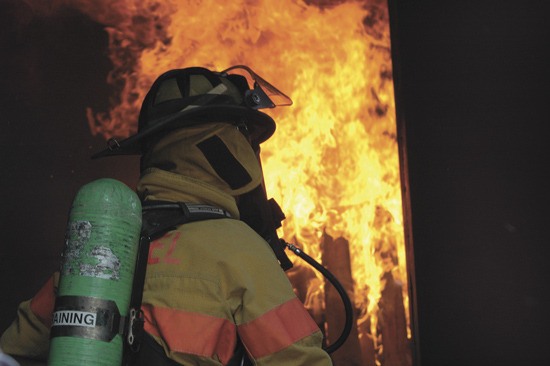The special East Pierce Fire Commissioners meeting Thursday was a solemn affair as Plateau residents gathered at the Bonney Lake Fire Station to discuss their questions and concerns about the East Pierce Fire and Rescue budget, which will be cut by $3 million in 2015.
The meeting was standing room only, and residents who could not find a seat stood in the back and even out into the hall to listen to the fire commissioners and Fire Chief Jerry Thorson explain their budget options and their goals for the next year.
Although the East Pierce Fire and Rescue Operations and Maintenance levy received a simple majority of 56 percent yes votes during the November general elections, state law required a supermajority, or 60 percent, of yes votes for the levy to pass.
By press deadline, the plan for the final East Pierce budget was to have it finished by November 18.
Many members of the public and even some of the commissioners expressed their frustration towards their present situation.
“We are talking about things we’ve never has to talk about before,” said Fire Commissioner Chair Dale Mitchell. “In my 25 years as a fire commissioner, I’ve never had to do this.”
The $3 million that was cut from East Pierce’s budget is equal to 14 percent of the department’s budget.
Property taxes and the Maintenance and Operations levy provided East Pierce with nearly 83 percent of its total budget in 2013, according to the department’s 2013 annual report.
The same report details nearly 85 percent of the budget went to personnel costs. Almost 11 percent went to supplies and special services, 4 percent to dispatch agency fees and other government agreements, and 1/2 percent to capital leases and debt.
At the meeting, fire commissioners explained to the public without the $3 million from the levy, the 2015 East Pierce budget will not have funds to maintain current staffing levels or continue numerous special public services.
Staffing Levels
One of the biggest concerns expressed by both the commissioners and the public was the smaller budget will result in East Pierce staff layoffs.
In order to prevent layoffs, commissioners are leaning towards developing a “rolling brownout” schedule, which will be a rotating schedule of station closures in order to reduce daily staffing and overtime.
The current plan is to decrease daily staff from 23 to 20 across East Pierce’s six career stations.
This drops the number of staff at several stations from four responders to three.
“Our staffing level reduction will save money, however it means that we will frequently have to close an engine or medic unit for the day. In some cases, an entire station will be closed for the day,” said Thorson. “It will definitely have an effect on our entire response plan and will result in slower response times for emergencies.”
During the Nov. 11 windstorm, East Pierce responded to at least 72 emergencies. “That’s more than triple our normal call volume of 24-25 calls per day,” said Thorson.
While no serious injuries were reported, emergencies included downed trees and power lines, as well as other wind-related damage. Two homes in the Lake Tapps area and one in Edgewood were damaged by fallen trees.
“We generally start the winter preparing for the worst, but it gets harder with fewer units on the road,” Thorson explained.
Public Services
While the overall impact to East Pierce’s public and education services is still being discussed, East Pierce spokeswoman Dina Sutherland said that there were some immediate effects on the department’s school assembly program, which were performed by the department’s safety clowns and their puppets.
“It was a major school outreach program,” Sutherland said. “And it came to a screeching halt.”
The program planned a total of 20 assemblies that focused on topics like stranger safety, stop, drop, and roll and home escape plans. However, the program was only able to perform five assemblies before the it was stopped.
Sutherland said the program was one of the best ways to teach children about safety, citing that tests given to kids before and after the assemblies showed students retained 85 percent of the knowledge they acquired at these assemblies.
Additionally, Sutherland said six citizen CPR and first aid classes were cut from the 2015 budget, and CPR programs for middle and high schoolers were cut from a four-day process to a two-day process. Students will also no longer be able to receive American Heart Association CPR certification from these classes.
“This is a big blow to education in school,” Sutherland said.


